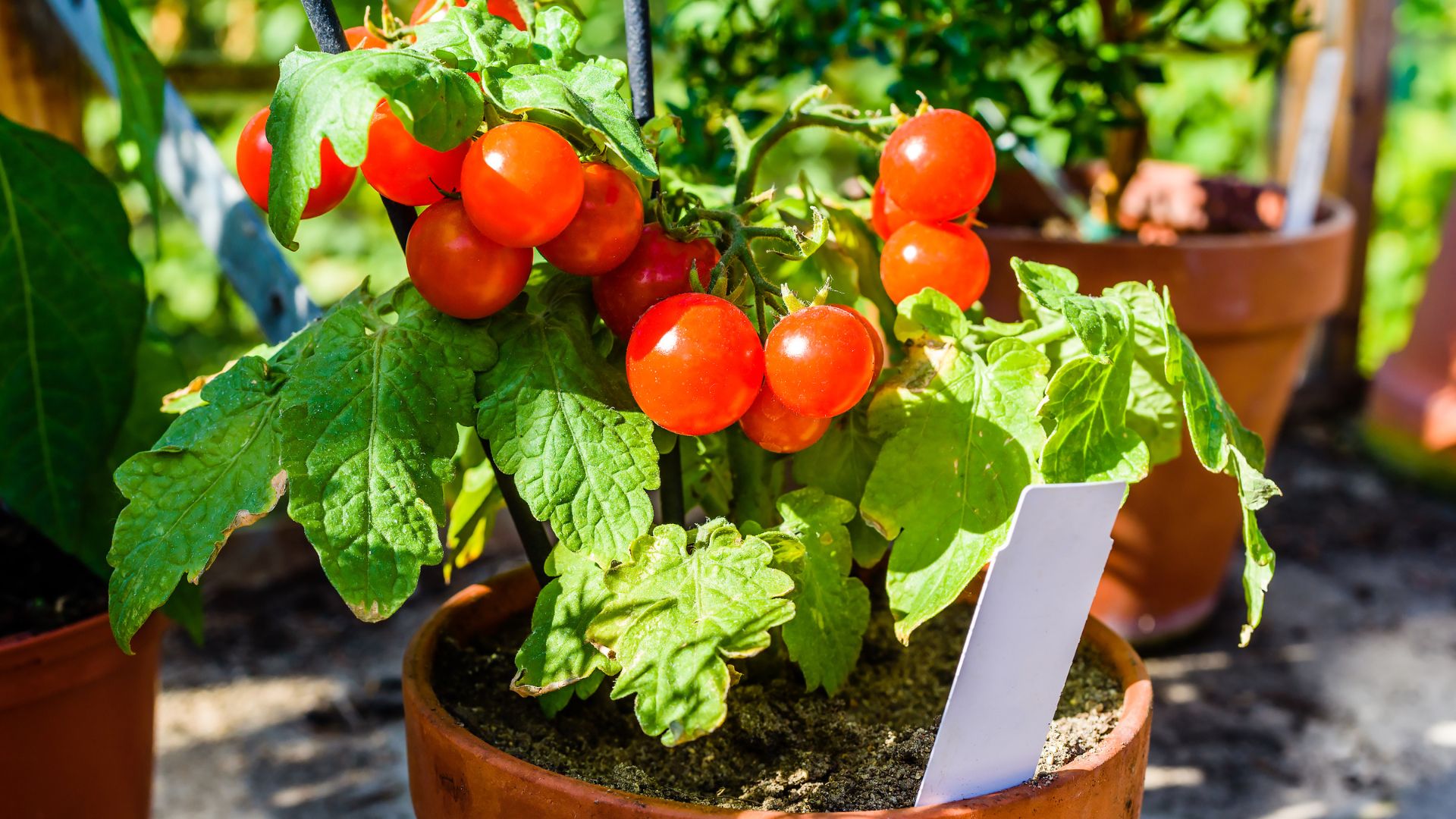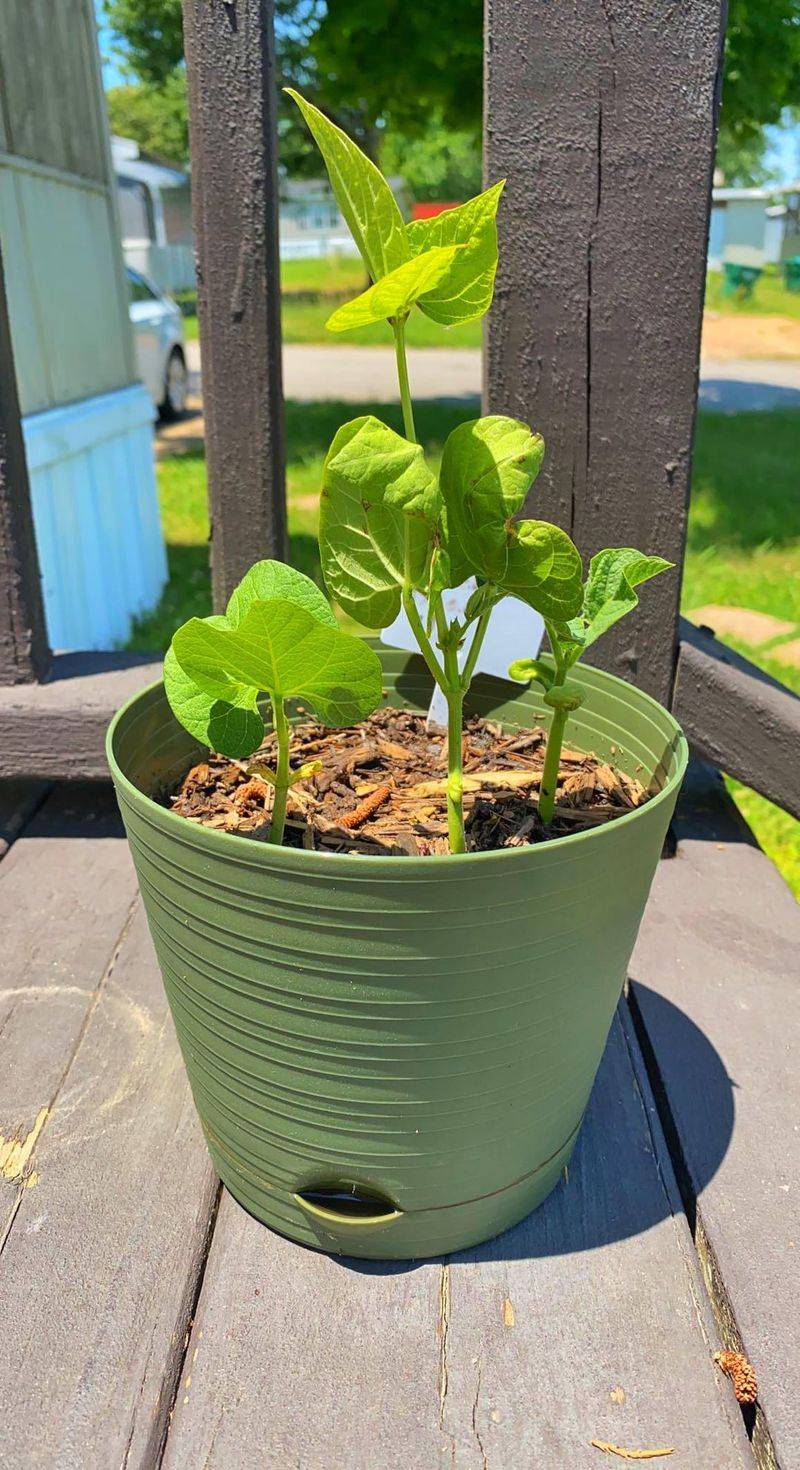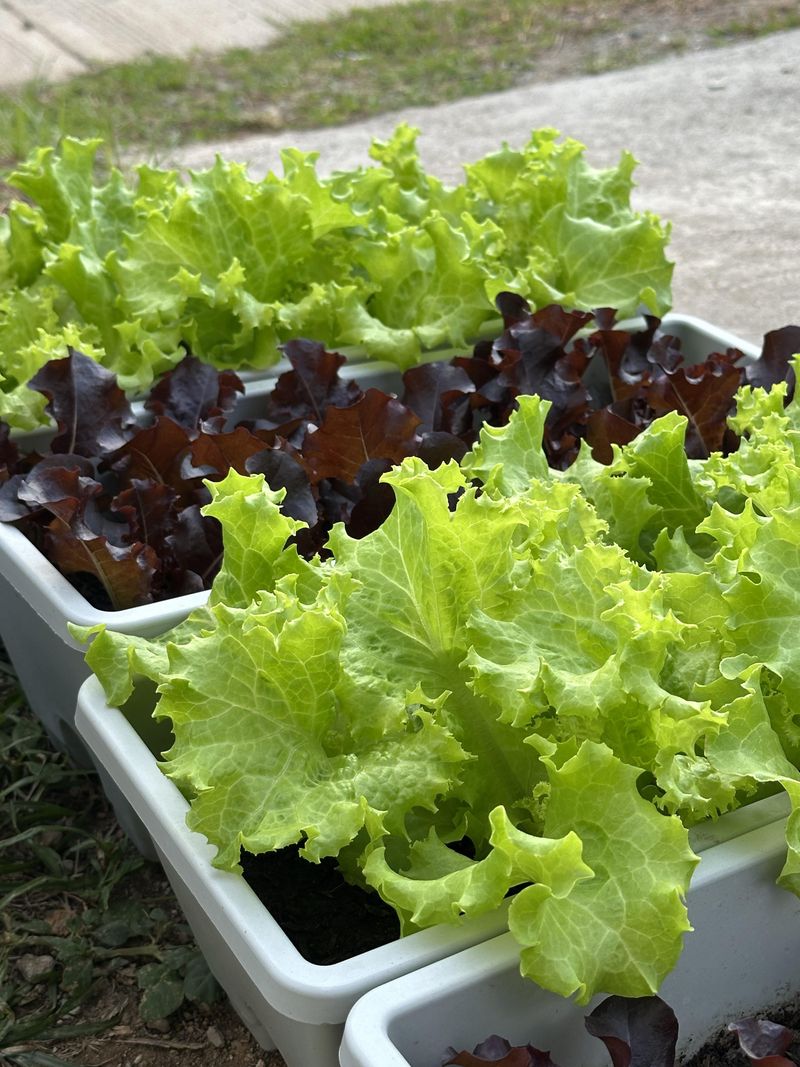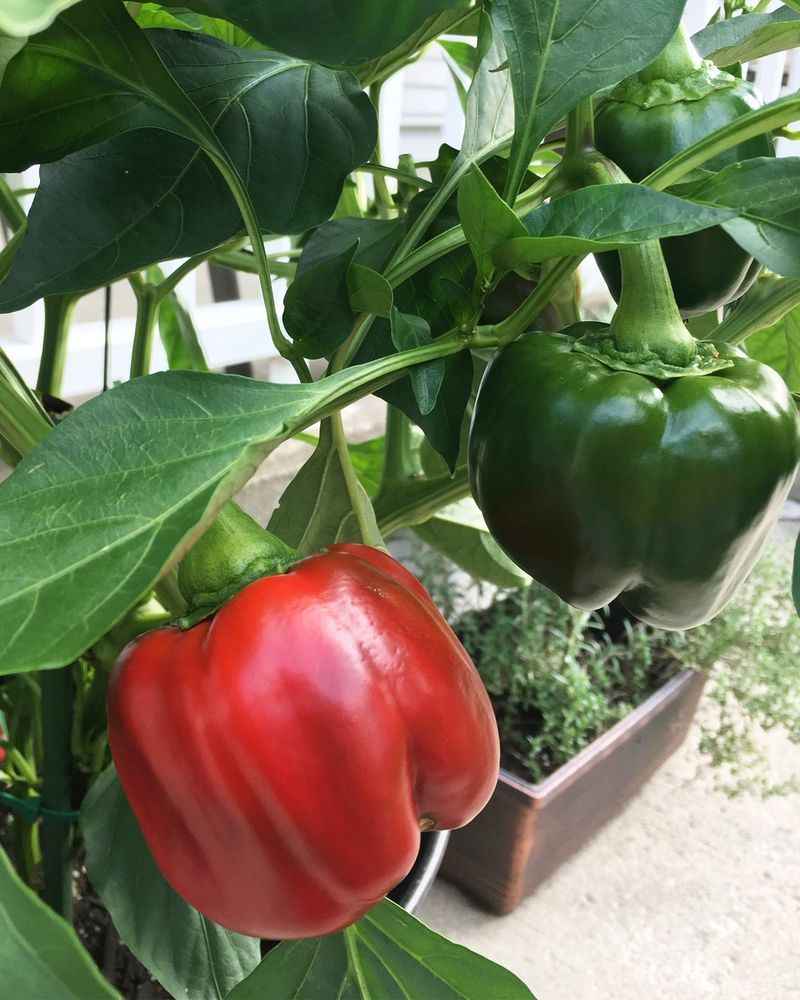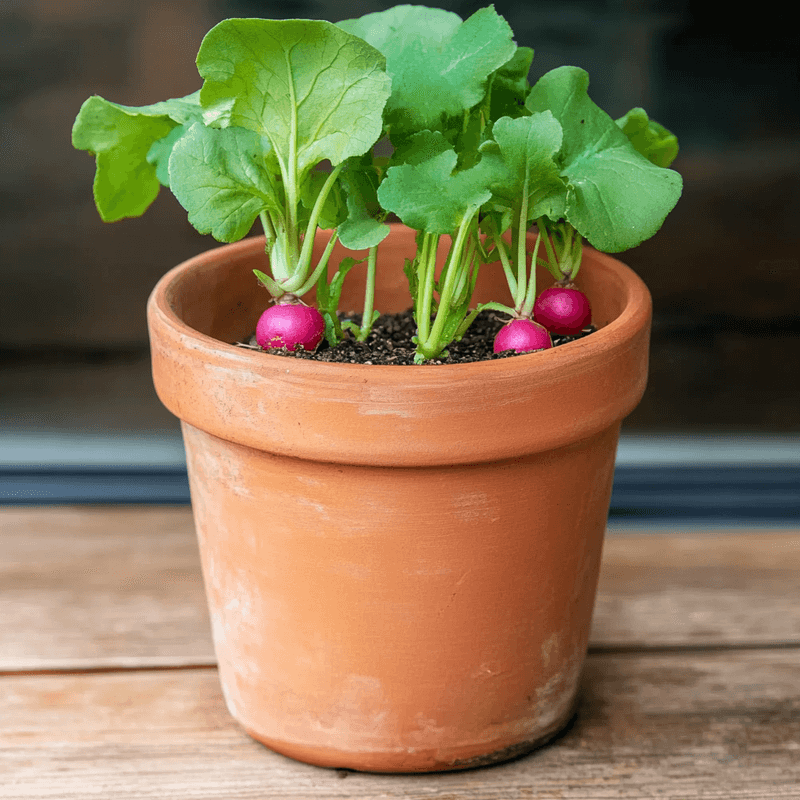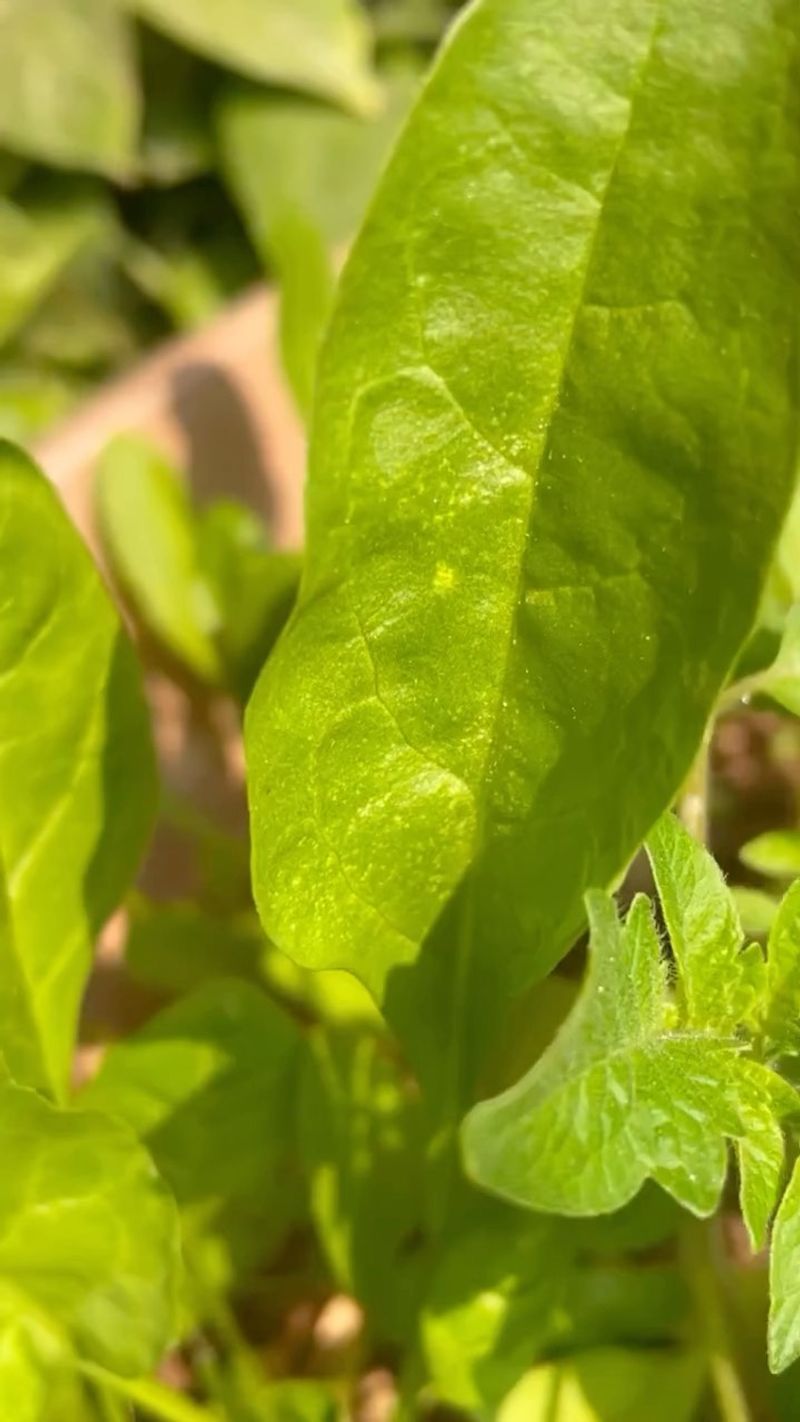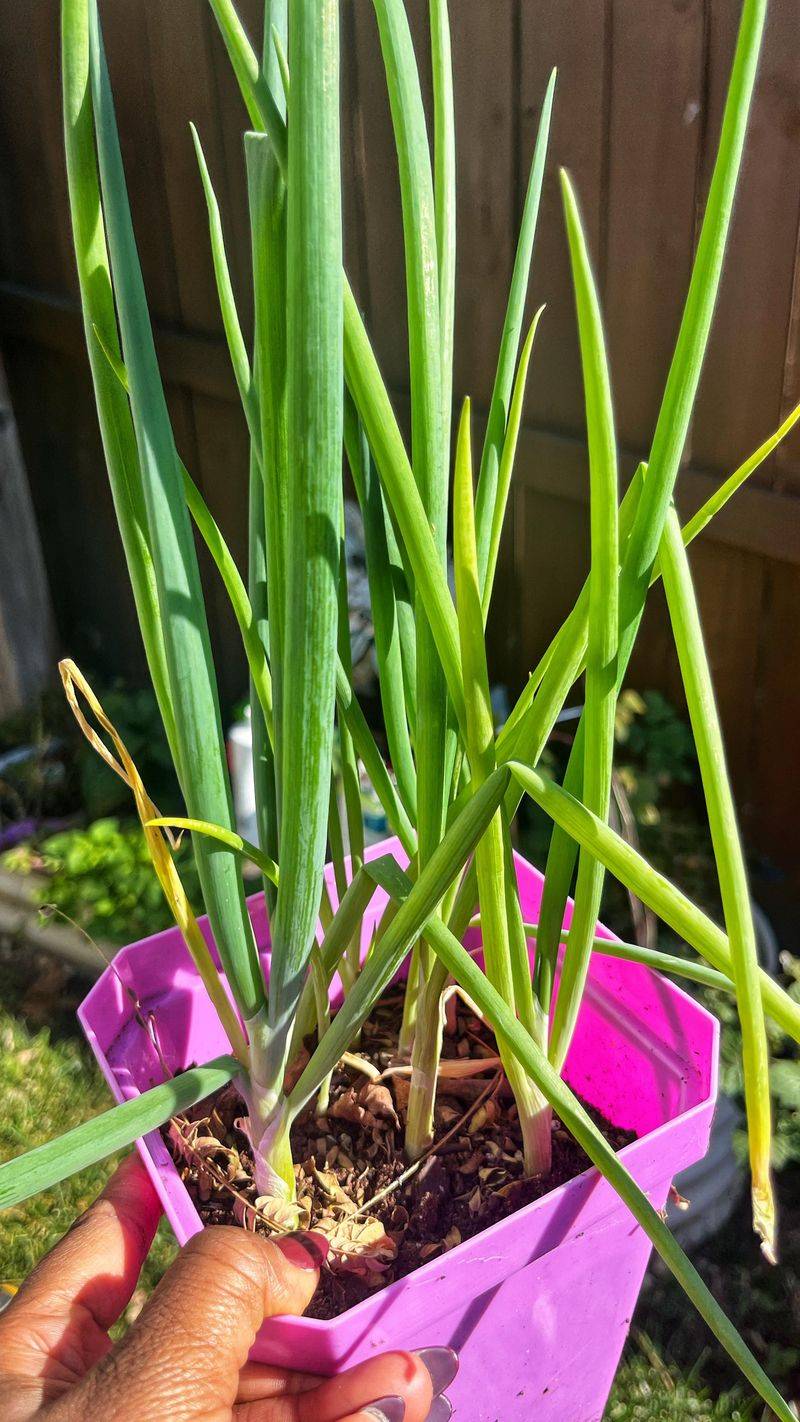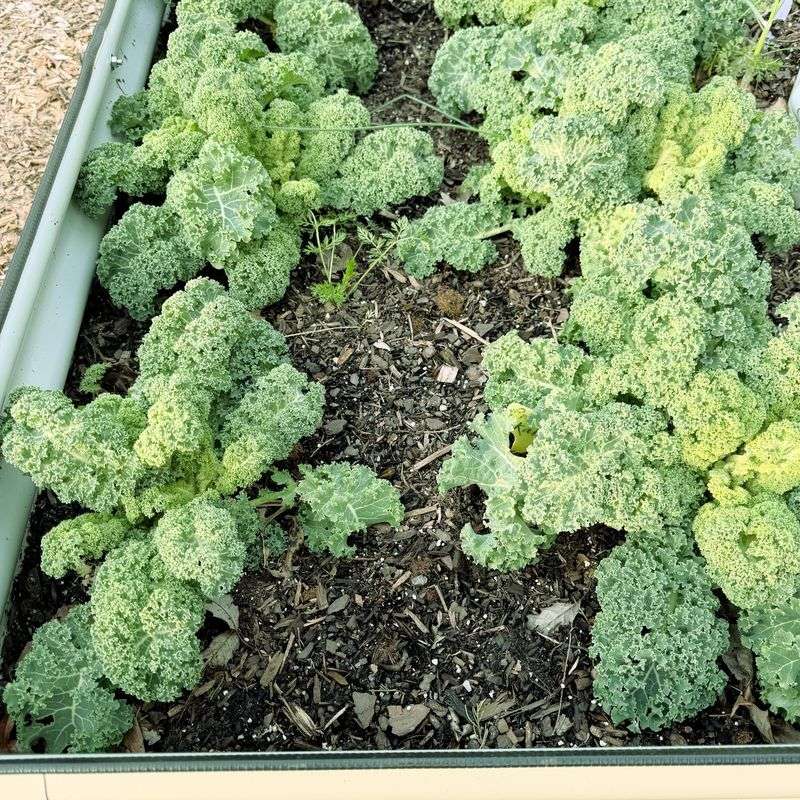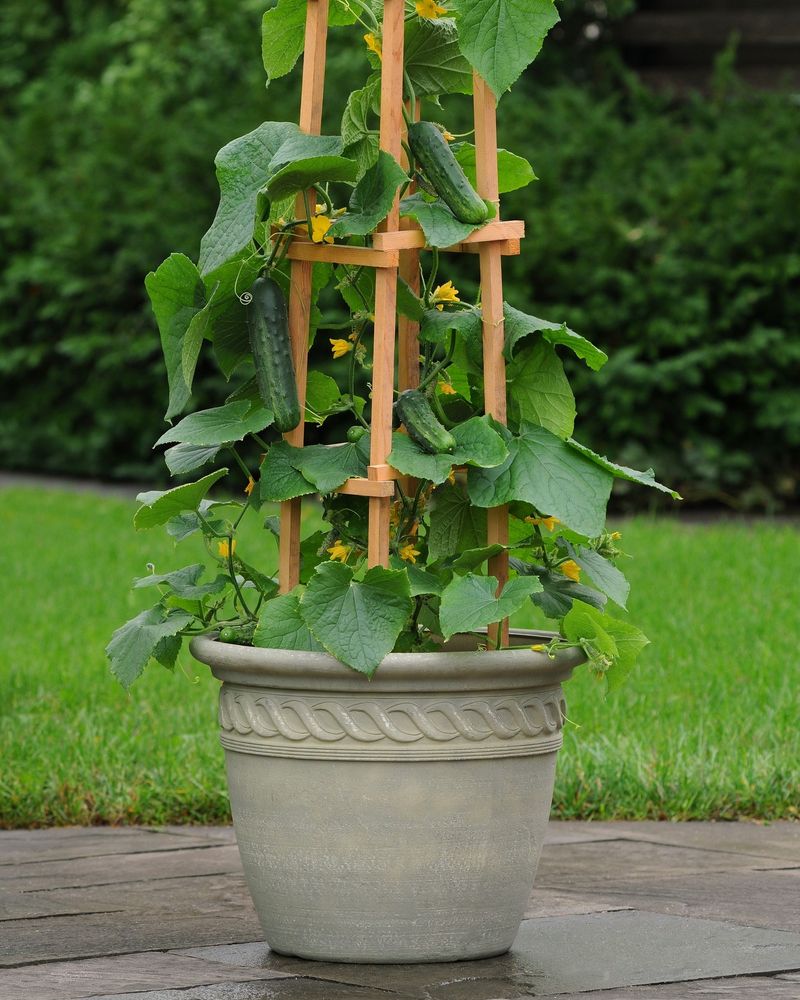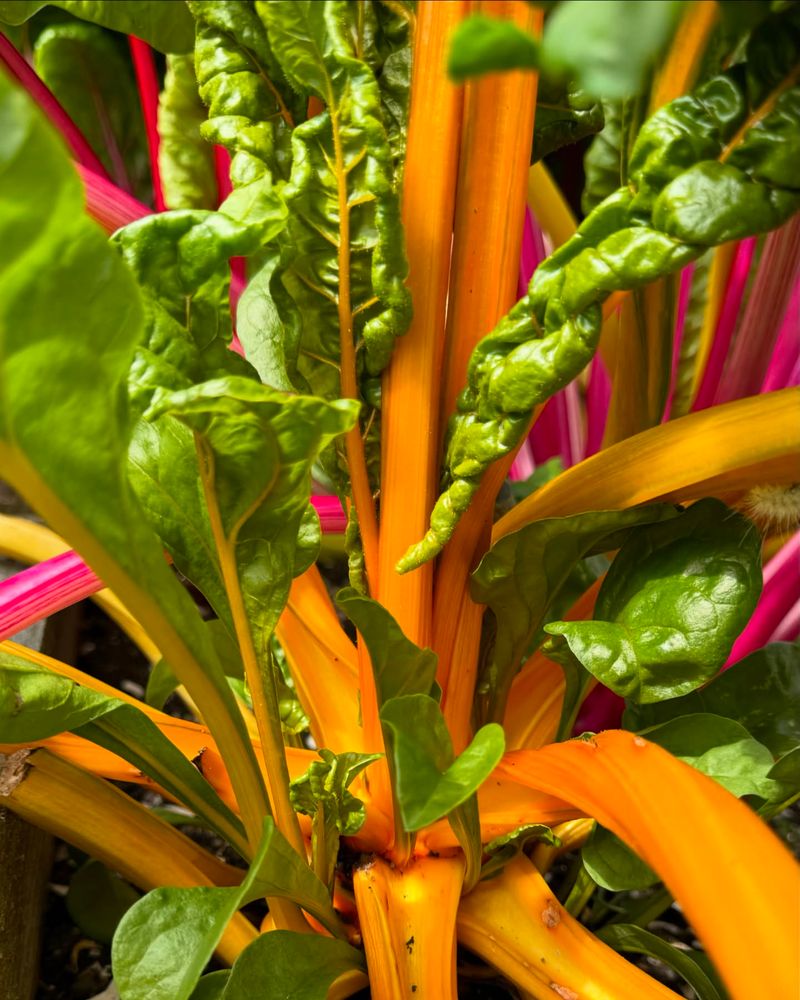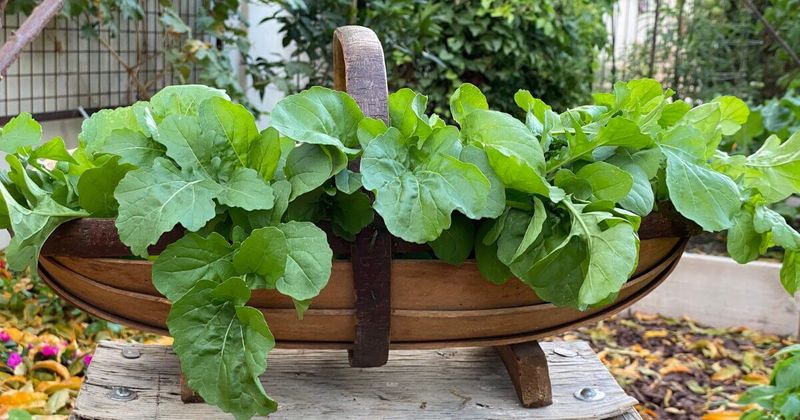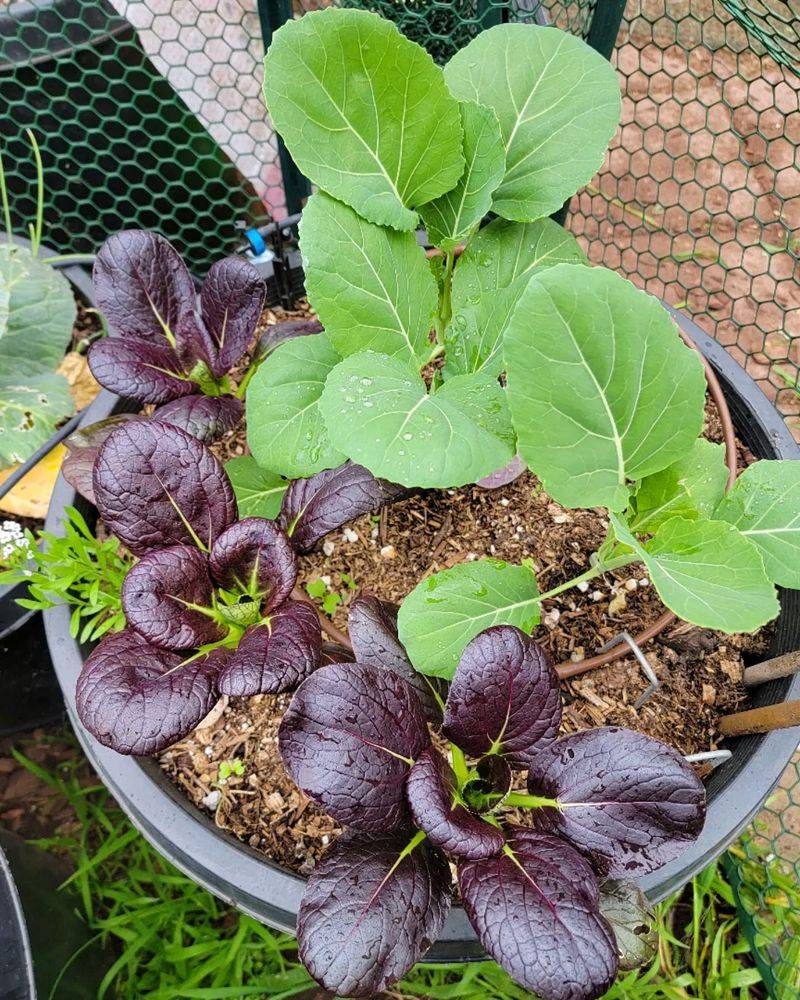You don’t need a backyard to enjoy homegrown veggies—just a few good containers and some sunshine. Container gardening has totally changed the game for people with balconies, patios, or even just a sunny doorstep.
It’s perfect if you’re short on space or time but still want that satisfying “I grew this!” moment. And honestly, some vegetables do even better in pots than they do in the ground.
If you’re ready to start harvesting from your own porch, here’s a down-to-earth guide to the best veggies for containers—the ones that actually grow well and taste amazing.
1. Cherry Tomatoes
Growing in hanging baskets or 5-gallon containers, these little gems produce incredible yields throughout summer. I’ve harvested over 300 tomatoes from a single potted plant before frost hit.
They need full sun and consistent watering, but otherwise don’t fuss much. When choosing varieties, look for those labeled ‘determinate’ if space is tight, or ‘indeterminate’ if you can provide vertical support.
The flavor difference between store-bought and homegrown is night and day. Even first-time gardeners have success with these – they’re forgiving of minor mistakes and reward you with daily harvests for months.
2. Bush Beans
Unlike their pole cousins that need trellising, bush varieties stay compact and produce plenty in limited space. A 12-inch deep container can support 4-5 plants with no staking required.
Direct sow the seeds after danger of frost has passed. The plants mature quickly, often producing harvestable beans within 50-60 days. For continuous harvests, sow new seeds every 2-3 weeks through mid-summer.
Harvesting actually encourages more production, so pick beans frequently. My container-grown beans have consistently outperformed those in my garden beds, likely because the soil warms faster in spring.
3. Lettuce
Shallow-rooted and quick to mature, lettuce performs beautifully in containers just 6 inches deep. You can grow multiple varieties in a single pot for colorful salad mixes.
Harvest using the cut-and-come-again method, snipping outer leaves while leaving the center intact to regrow. During summer heat, move containers to partially shaded spots to prevent bitter taste and bolting.
For year-round greens, I keep a rotation going indoors near a sunny window during winter months. Lettuce in containers also stays cleaner than ground-grown, with fewer slug problems and no soil splashing onto leaves.
4. Bell Peppers
Compact by nature, bell peppers adapt wonderfully to container life. The plants appreciate the warmth that pots provide, often producing earlier than garden-planted peppers.
One plant per 3-gallon container works perfectly. Feed them with a balanced liquid fertilizer every two weeks once they start flowering. My container peppers have always developed thicker walls and sweeter flavor than those in my garden beds.
Letting peppers ripen fully transforms them from green to red, yellow, or orange depending on variety. This color change brings increased vitamin content and sweetness – worth the extra wait if you can resist harvesting early.
5. Radishes
Ready to harvest in just 3-4 weeks, radishes deliver quick gratification for impatient gardeners. Their shallow roots make them perfect for window boxes or repurposed containers.
Sow seeds directly about half an inch deep and one inch apart. Thin seedlings to allow proper bulb formation. Water consistently to prevent the spicy flavor from intensifying too much.
Try winter varieties like Daikon in deeper pots for an extended season. I’ve grown radishes in everything from old boots to colanders with excellent results – they’re among the most adaptable vegetables for creative container projects.
6. Spinach
Cool-weather loving and nutrient-dense, spinach grows rapidly in containers during spring and fall. The compact growth habit means you can grow a substantial amount in limited space.
Harvest outer leaves when they reach 3-4 inches, allowing the plant to continue producing. During summer heat, move containers to morning-sun locations to extend the harvest period before bolting occurs.
Container-grown spinach tends to stay cleaner and is easier to protect from pests. Last fall, I grew enough in two window boxes to supply fresh spinach for smoothies and salads for nearly three months.
7. Zucchini
Contrary to popular belief, these prolific producers do well in large containers. Choose bush varieties specifically bred for smaller spaces rather than sprawling types.
A 5-gallon container can support one plant with proper feeding. Hand-pollination may be necessary for container-grown zucchini – just use a small brush to transfer pollen between male and female flowers.
Harvest fruits when they’re 6-8 inches long for best flavor and texture. I’ve found container zucchini easier to monitor for powdery mildew and squash borers, making prevention simpler than with garden-grown plants.
8. Green Onions
Requiring minimal space and care, green onions can grow in containers as shallow as 6 inches. Plant them closely together – about an inch apart – for maximum yield from a small footprint.
Harvest by cutting what you need while leaving the white root end in the soil to regrow. Many gardeners don’t realize you can regrow store-bought green onions by placing the root ends in water, then transferring to a pot.
For a continuous supply, start new plantings every few weeks. My kitchen windowsill has hosted productive green onions year-round, providing fresh flavor for cooking without taking up precious counter space.
9. Carrots
Short, round varieties like Paris Market or Thumbelina are container superstars, requiring less depth than traditional long carrots. The soil quality in containers can actually be better controlled than garden beds, resulting in straighter roots.
Use containers at least 8-12 inches deep, depending on the variety. Thin seedlings ruthlessly to allow proper root development – a step many beginners skip, resulting in disappointing harvests.
Container carrots typically need more consistent moisture than garden-grown. I’ve had great success growing them in repurposed plastic storage tubs with drainage holes added, harvesting sweet baby carrots throughout the season.
10. Kale
Cold-hardy and long-producing, kale delivers multiple harvests from the same plants for months. The attractive leaves make it suitable for ornamental containers or mixed plantings.
Dwarf varieties like ‘Dwarf Blue Curled’ or ‘Red Russian’ work especially well in pots. Harvest outer leaves regularly, allowing the center to keep producing new growth.
Container kale can be moved to shadier spots during summer heat to prevent bitter flavor. During my first apartment gardening experience, a single pot of kale on my balcony provided weekly harvests from September through February in zone 6.
11. Cucumbers
Bush or compact varieties like ‘Spacemaster’ or ‘Patio Snacker’ are bred specifically for container growing. Provide a small trellis or cage for support, even with bush types, to maximize space and improve air circulation.
Regular harvesting encourages continued production. Keep the soil consistently moist, as dry conditions lead to bitter fruits. Female flowers (the ones with tiny cucumbers behind them) may need hand-pollination if bee activity is limited.
Container-grown cucumbers often produce earlier than garden-planted ones due to warmer soil temperatures. My deck-grown cucumbers have consistently outperformed my garden patch, likely because I can position them for optimal sun exposure.
12. Eggplant
Heat-loving and ornamental, eggplants thrive in containers that warm up quickly in spring. The smaller Asian or Italian varieties are particularly well-suited for pot culture.
One plant per 5-gallon container provides enough room for proper development. Feed regularly with a balanced fertilizer to support fruit production. Black containers absorb heat and can help boost growth in cooler climates.
Staking may be necessary as fruits develop weight. Harvest when the skin is glossy for best flavor – waiting too long results in bitter taste and tough seeds. My container eggplants have produced more consistently than garden-grown ones during cool summers.
13. Swiss Chard
Offering both edible stems and leaves, Swiss chard delivers visual impact and nutritional punch from containers. The ‘Bright Lights’ variety with its multicolored stems makes an attractive edible ornamental.
Plant in containers at least 8 inches deep, spacing plants about 6 inches apart. Harvest outer leaves regularly while leaving the center crown to continue growing for months of production.
Unlike many greens, chard tolerates summer heat without bolting, making it a reliable producer all season. During winter, I bring containers into a protected area, harvesting from the same plants for nearly a year before replanting.
14. Arugula
Fast-growing with a distinctive peppery flavor, arugula provides quick returns on minimal investment. Shallow root systems make it suitable for window boxes or repurposed containers just 4-6 inches deep.
Sow seeds directly and begin harvesting baby leaves in as little as 21 days. Cut leaves about an inch above soil level to encourage regrowth. For continuous harvest, sow new seeds every 2-3 weeks.
During summer, partial shade helps prevent bolting and maintains mild flavor. I’ve grown arugula in everything from old colanders to recycled plastic clamshell containers, making it perfect for creative container gardening on a budget.
15. Peas
Sweet and productive, peas make excellent container crops during cool seasons. Dwarf varieties need minimal support, while climbing types can be trained up trellises attached to pots.
A container 8-12 inches deep works well, with seeds planted about an inch apart. Peas fix nitrogen in the soil, making them beneficial companions for future plantings. Harvest pods frequently to encourage continued production.
Fall-planted peas often perform better in containers than garden beds because the soil temperature can be controlled. Last spring, my balcony-grown sugar snap peas produced nearly double the yield of those in my community garden plot.
16. Bok Choy
Quick-growing Asian greens like bok choy mature in just 45-50 days, making them perfect for impatient container gardeners. Baby varieties require even less time and take up minimal space.
Plant in containers at least 6 inches deep, spacing plants about 6 inches apart. Consistent moisture produces tender leaves and stems. Harvest the entire plant by cutting at soil level, or take outer leaves for cut-and-come-again harvesting.
Cool weather crops by nature, they perform best in spring and fall. Moving containers to shadier locations extends their season into warmer months. I’ve successfully grown bok choy in recycled plastic salad containers, making them extremely budget-friendly.
178. Beets
Both the roots and greens are edible, making beets a dual-purpose container crop. Varieties like ‘Baby Ball’ or ‘Golden Boy’ mature quickly and stay smaller, perfect for containers.
Use pots at least 8-10 inches deep, thinning seedlings to 3 inches apart. Harvest baby greens while waiting for roots to mature. Consistent moisture prevents woody texture and maintains sweetness.
Container-grown beets often develop cleaner, more uniform roots than garden-grown ones. I’ve had great success interplanting them with shallow-rooted herbs like parsley, maximizing the productive space in larger containers.

